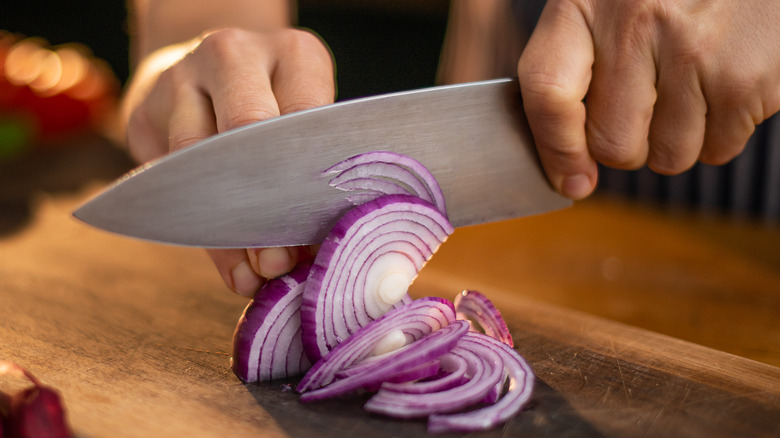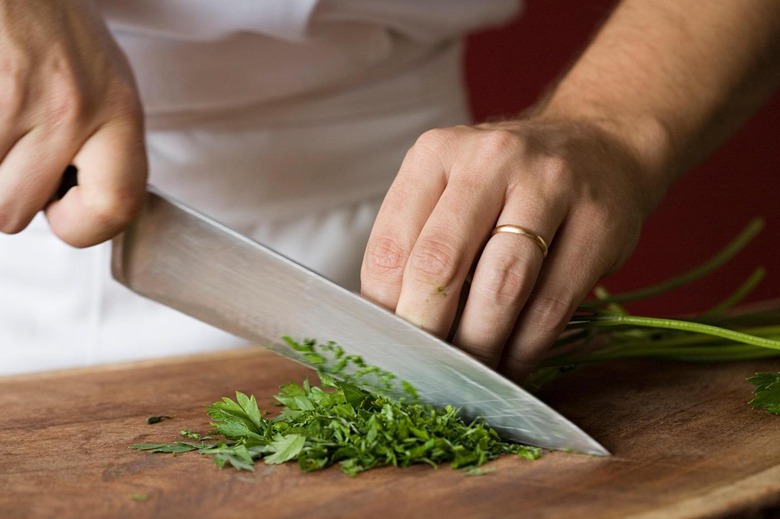For any kitchen professional, the knife is an extension of their hand, a tool that not only aids in efficiency but also enhances the artistry of cooking. Among the myriad of knives available, German kitchen knives have carved a niche of their own, celebrated for their strength, durability, and precision. In this German kitchen knife review, we aim to dissect what makes these knives a staple in professional kitchens worldwide.

The Legacy of German Knives
Germany, particularly the city of Solingen, has been synonymous with high-quality knife manufacturing for centuries. Known as the 'City of Blades,' Solingens reputation is built on a long history of craftsmanship and innovation. German knives are renowned for their robust construction, typically forged from high-carbon stainless steel, providing a perfect balance between hardness and corrosion resistance.
For further insights into the historical development of these blades, check out this comprehensive history on German knife making.
Key Features of German Kitchen Knives
Blade Construction
The core of any knife is its blade, and German knives are typically forged rather than stamped, which contributes to their heft and durability. The forging process involves heating a single piece of steel and then shaping it, which results in a denser and more durable blade. This method contrasts sharply with the production of many other knives which are stamped from sheets of metal.
Learn about different knife blade coatings that enhance the longevity and performance of these blades.
Edge Retention
German knives are designed with a slightly softer steel than their Japanese counterparts, usually around 56-58 on the Rockwell scale. This characteristic makes them easier to sharpen and maintain, providing a forgiving edge that can withstand more aggressive cutting techniques without chipping.
Handle Design
The handle is another defining feature, typically made from synthetic materials that resist moisture and provide a comfortable grip. The full tang construction, where the steel extends through the handle, ensures balance and longevity.
Comparing German and Japanese Knives
While German knives are celebrated for their durability, Japanese knives are often praised for their lightweight design and razor-sharp edges. Each has its own set of advantages, and many chefs prefer to have a mix of both in their culinary arsenal. For a more detailed comparison, explore this comparison of German and Japanese knives.
Maintaining Your German Knives
Proper maintenance is crucial to extending the life of your German knives. Regular honing with a sharpening steel can help maintain the edge, while periodic sharpening is necessary to restore it. For detailed advice on keeping your blades in top condition, refer to this maintenance guide.
Storage and Care
Storing your knives properly is equally important. Knife blocks, magnetic strips, or knife guards can protect the blade from damage. Additionally, hand washing and drying your knives immediately after use will prevent rust and extend their lifespan.
For cleaning tips, see the Wusthof cleaning guide.
Conclusion
In conclusion, German kitchen knives are an investment in quality and performance, ideal for both seasoned chefs and culinary enthusiasts. Their durability, combined with precise engineering, makes them invaluable in any professional kitchen setting. By understanding their features and proper maintenance, you can ensure these knives serve you well for years to come.

FAQs
What makes German kitchen knives durable?
German kitchen knives are known for their forged construction using high-carbon stainless steel, which provides a robust and durable blade. The full tang design and synthetic handles also add to their durability.
How do German knives compare to Japanese knives?
While German knives are heavier and more durable, Japanese knives are lighter and have a sharper edge. Many chefs prefer a combination of both for different tasks in the kitchen.
What is the best way to maintain a German kitchen knife?
Regular honing and occasional sharpening are essential for maintaining the blade. Proper storage and hand washing will also help extend its life.


























